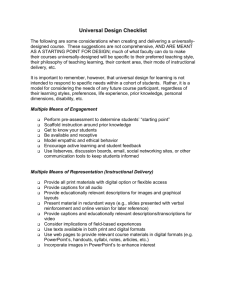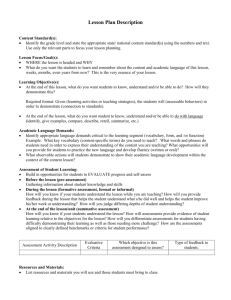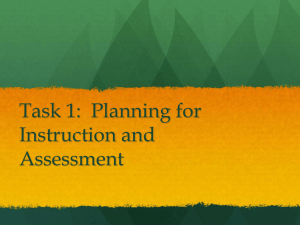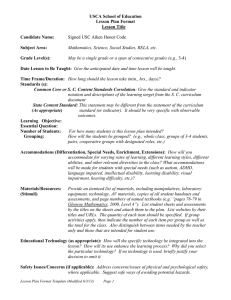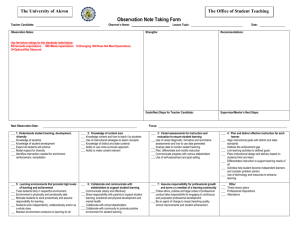Universal Design Checklist
advertisement
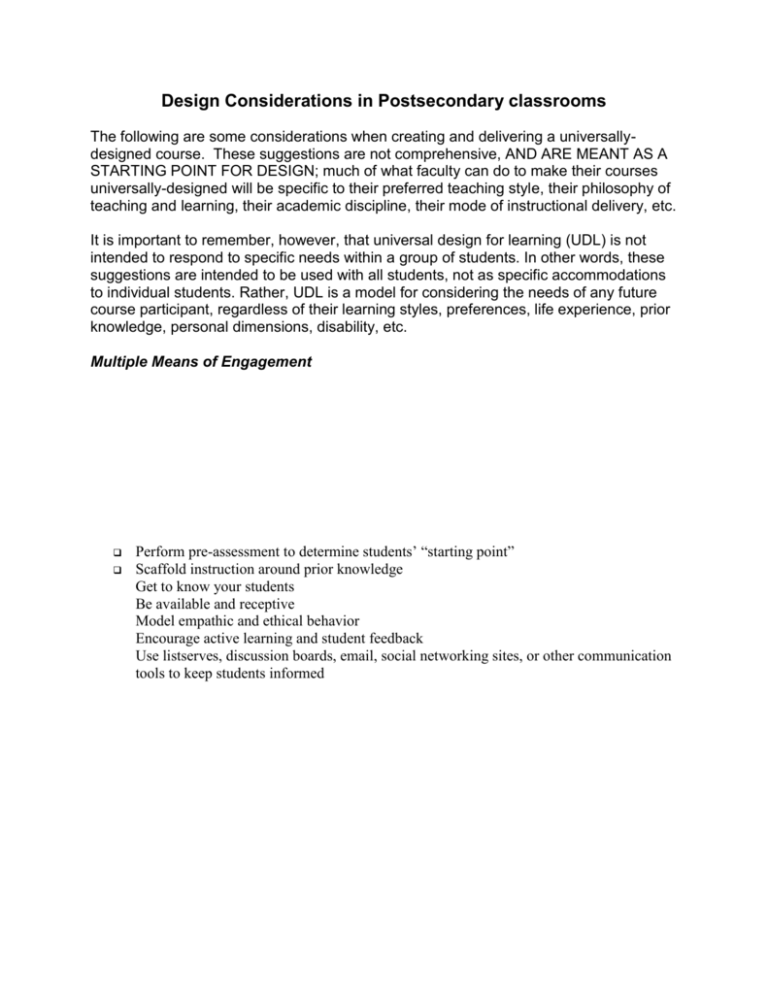
Design Considerations in Postsecondary classrooms The following are some considerations when creating and delivering a universallydesigned course. These suggestions are not comprehensive, AND ARE MEANT AS A STARTING POINT FOR DESIGN; much of what faculty can do to make their courses universally-designed will be specific to their preferred teaching style, their philosophy of teaching and learning, their academic discipline, their mode of instructional delivery, etc. It is important to remember, however, that universal design for learning (UDL) is not intended to respond to specific needs within a group of students. In other words, these suggestions are intended to be used with all students, not as specific accommodations to individual students. Rather, UDL is a model for considering the needs of any future course participant, regardless of their learning styles, preferences, life experience, prior knowledge, personal dimensions, disability, etc. Multiple Means of Engagement Use reflective activities (e.g., think-pair-share) Have students work in pairs or small groups to solve a problem Use collaborative, as well as cooperative, group experiences Change pace of lecture frequently Give a demonstration Show a video clip Tell a story or anecdote Provide opportunities for students to move (e.g., Snowball or Concentric Circles activities, etc.) Perform pre-assessment to determine students’ “starting point” Scaffold instruction around prior knowledge Get to know your students Be available and receptive Model empathic and ethical behavior Encourage active learning and student feedback Use listserves, discussion boards, email, social networking sites, or other communication tools to keep students informed Clearly align evaluation with instruction Provide rationale for evaluations and assignments Define clear expectations in the syllabus Model expectations through personal practice, samples, rubrics, etc. Consistently adhere to those expectations Multiple Means of Representation (Instructional Delivery) Provide all print materials with digital option or flexible access Provide captions for all audio Provide educationally relevant descriptions for images and graphical layouts Present material in redundant ways (e.g., slides presented with verbal reinforcement and online version for later reference) Provide captions and educationally relevant descriptions/transcriptions for video Consider implications of field-based experiences Use texts available in both print and digital formats Use web pages to provide relevant course materials in digital formats (e.g. PowerPoint’s, handouts, syllabi, notes, articles, etc.) Incorporate images in PowerPoint’s to enhance interest Multiple Means of Expression (Assessment and Student Activities) Use assessment data to inform instruction (i.e., if the average for a test is a 52%, determine what the students didn’t understand, and make sure they do) Create assessments that address higher order thinking skills (i.e., application, analysis, evaluation) Provide flexibility or choice in evaluation methods Consider take-home, online, or group assessments Consider untimed assessments Consider evaluating process in addition to product (e.g., portfolios, etc.) Consider project, performance and product assessments, in addition to written assessments Use study guides and review sessions Use clear grading rubrics or criteria Provide immediate feedback Align assessment choices with variety in instructional delivery

